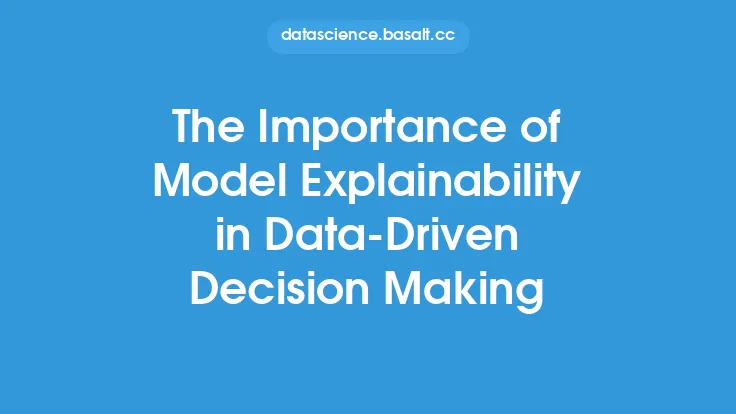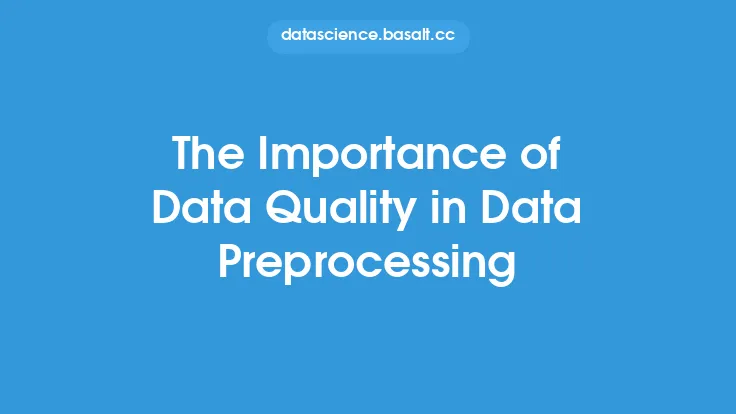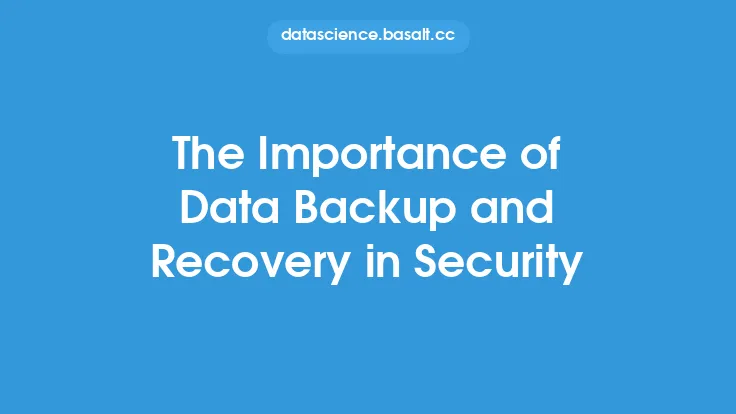Data governance is a critical component of any data architecture, as it ensures that an organization's data assets are properly managed, secured, and utilized to achieve business objectives. Effective data governance provides a framework for managing data across the entire organization, from data creation to data retirement, and involves a range of activities, including data quality management, data security, data compliance, and data access control. In this article, we will explore the importance of data governance in data architecture and discuss the key components, benefits, and best practices of a well-designed data governance program.
Introduction to Data Governance
Data governance is a set of policies, procedures, and standards that ensure the effective management of an organization's data assets. It involves a range of activities, including data quality management, data security, data compliance, and data access control. The primary goal of data governance is to ensure that data is accurate, complete, and consistent across the organization, and that it is properly secured and protected from unauthorized access or misuse. Data governance also involves ensuring that data is properly documented and that data-related policies and procedures are clearly communicated to all stakeholders.
Key Components of Data Governance
A well-designed data governance program typically includes several key components, including:
- Data quality management: This involves ensuring that data is accurate, complete, and consistent across the organization. Data quality management activities include data validation, data cleansing, and data normalization.
- Data security: This involves ensuring that data is properly secured and protected from unauthorized access or misuse. Data security activities include access control, encryption, and authentication.
- Data compliance: This involves ensuring that data is managed in compliance with relevant laws, regulations, and industry standards. Data compliance activities include ensuring that data is properly documented and that data-related policies and procedures are clearly communicated to all stakeholders.
- Data access control: This involves ensuring that data is properly accessed and utilized by authorized personnel. Data access control activities include role-based access control, data masking, and data encryption.
Benefits of Data Governance
Effective data governance provides a range of benefits, including:
- Improved data quality: Data governance ensures that data is accurate, complete, and consistent across the organization, which improves decision-making and reduces errors.
- Enhanced data security: Data governance ensures that data is properly secured and protected from unauthorized access or misuse, which reduces the risk of data breaches and cyber attacks.
- Increased compliance: Data governance ensures that data is managed in compliance with relevant laws, regulations, and industry standards, which reduces the risk of non-compliance and associated penalties.
- Better decision-making: Data governance ensures that data is properly documented and that data-related policies and procedures are clearly communicated to all stakeholders, which improves decision-making and reduces errors.
Best Practices for Data Governance
To implement a well-designed data governance program, organizations should follow several best practices, including:
- Establish a data governance framework: This involves defining the policies, procedures, and standards for managing data across the organization.
- Assign data governance roles and responsibilities: This involves assigning clear roles and responsibilities for data governance activities, including data quality management, data security, and data compliance.
- Develop a data governance plan: This involves developing a plan for implementing and maintaining a data governance program, including identifying data governance goals and objectives, and establishing metrics for measuring success.
- Monitor and report on data governance activities: This involves monitoring and reporting on data governance activities, including data quality management, data security, and data compliance.
Technical Considerations for Data Governance
From a technical perspective, data governance involves a range of activities, including:
- Data modeling: This involves creating a conceptual representation of an organization's data assets, including entities, attributes, and relationships.
- Data warehousing: This involves designing and implementing a data warehouse to store and manage an organization's data assets.
- Data integration: This involves integrating data from multiple sources, including databases, files, and applications.
- Data security technologies: This involves implementing technologies such as encryption, access control, and authentication to secure and protect data.
Data Governance Tools and Technologies
A range of tools and technologies are available to support data governance activities, including:
- Data governance platforms: These platforms provide a range of tools and features for managing data governance activities, including data quality management, data security, and data compliance.
- Data quality tools: These tools provide features for managing data quality, including data validation, data cleansing, and data normalization.
- Data security tools: These tools provide features for managing data security, including access control, encryption, and authentication.
- Data integration tools: These tools provide features for integrating data from multiple sources, including databases, files, and applications.
Conclusion
In conclusion, data governance is a critical component of any data architecture, as it ensures that an organization's data assets are properly managed, secured, and utilized to achieve business objectives. Effective data governance provides a framework for managing data across the entire organization, from data creation to data retirement, and involves a range of activities, including data quality management, data security, data compliance, and data access control. By following best practices and leveraging tools and technologies, organizations can implement a well-designed data governance program that improves data quality, enhances data security, increases compliance, and supports better decision-making.





